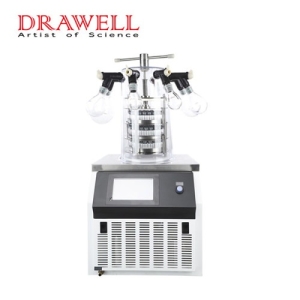Imagine a world devoid of all plants and trees; is that even possible? You can't, and if you can't, then try to picture your environment without any kind of fasteners. In this realm of engineering, they do, in fact, play a part that is extremely important and fundamental. If you're like most people, whenever you hear the word "fasteners," the first thing that probably comes to mind is some type of screw, bolt, or nut. The answer is that it is, but there are a great many more types of fasteners that are going to be discussed in this article. Now that we have that out of the way, shall we start to comprehend what exactly a fastener is?
A hardware device known as a fastener is a piece of equipment that, in most cases, serves as a temporary means of joining or holding materials together. Yes, a joint can be either non-permanent or permanent. A non-permanent joint allows the joined components to be easily separated without causing any damage to the joint, while a permanent joint either causes the joint to become damaged or reduces the strength of the component.
What are the different ways that joints, both permanent and temporary, can be created?
Screws, bolts, nuts, washers, cotter joints, and other types of fasteners are typical examples of the types of fasteners that are used to create non-permanent joints. As well as some permanent joints achieved through a process that may involve welding, riveting, soldering, brazing, or other similar techniques.
The Significance of Attachments
Have you heard of the airline that uses Boeing 747 jets? Yes, an American wide-body commercial jet airline commonly referred to as "Jumbo jets," which have approximately 30 lakhs of different types of fasteners out of a total of 60 lakhs of different parts. It doesn't matter if it's the hinge on your door or an appliance in your home; whether it's an automobile, machinery, construction, or infrastructure; or any other item that needs to be assembled; there will be fasteners present to affix them. Fasteners manufacturer are an essential component of hardware that are used nearly everywhere. What happens if just one of the fasteners becomes loose or stops working properly? It is certain to have an effect on the entire system or bring about undesirable consequences. Therefore, the strength, durability, and rigidity are dependent on the type of material that we are going to use or what should be the coating on it or what should be the dimension of it. This is because the selection of appropriate fasteners will reduce the stress concentration, which in turn will reduce the fatigue. In today's world, you can get ferrous, non-ferrous, or even plastic fasteners for your projects. The market is flooded with different kinds of fasteners, each of which is designed for a particular purpose.
Components that make up a Fastener
As soon as you have determined which kind of fasteners will work best for your project, you can move on to the next most important factor in the material selection process, which is the type of material. To ensure that your fastener is up to the task at hand, each and every project has its own unique set of material requirements, which are determined by a variety of factors, including environmental conditions, the nature of corrosion, vibrations, strength, and durability, among many others.
Roughly ninety percent of the things in our environment are steel fasteners. It might be made of carbon steel, stainless steel, alloy steel, or any number of other types of steel. The fact that they can be formed to a high degree, that they are long-lasting, that they have a high tensile strength, and that they can be fabricated at a reasonable cost results in the existence of a wide variety of them. Plating with zinc or chromium is typically used in the processing of it.
1. Carbon Steel Fasteners
You have probably noticed black-colored fasteners while working on projects; the reason for their dark color is that they contain carbon. When comparing low-carbon steel to high-carbon steel, the range of possible carbon percentages can reach up to 2.1% by weight. Because of their sturdy construction, high tensile strength, long lifespan, and resistance to the damaging effects of harsh environmental conditions, these are widely used in a variety of industries, including the automotive, oil and gas, and shipbuilding sectors.
Standard specifications for these carbon steel fasteners typically include grades 2, 5, and 8.
The question that arises now is, what exactly are these grades, and how can one recognize them?
The head of the fasterner is where we should be looking for that information. In order to determine the grades, we need to search for the radial lines that are over it. If there are no lines, then it is a grade 2, which can be either low or medium carbon steel. If it has three radial lines, then it is a grade 5, which is medium carbon steel and is commonly used in automotive applications. If it has six radial lines, then it is a medium carbon alloy, which is typically used in vehicle suspension systems.
2. Stainless Steel Fasteners
MainlyIt is an alloy that consists of low-grade carbon combined with at least 10.5% by weight of chromium and a few other elements. A high degree of corrosion resistance can be attributed to the presence of chromium. Because of the material's low carbon content, it cannot be hardened and is therefore stronger than grade 2, but not as much as grades 5 and 8. In addition to that, they have properties of shining. They are used everywhere from households to the automotive industry because of their low cost, easy availability, and appealing appearance.
3. Aluminum Fasteners
They are the lightweight fasteners and are used in locations where weight is constrained. They can be alloyed into a wide variety of other materials in order to increase their strength. The ability of these fasteners to withstand both hot and cold temperatures is their unique selling proposition. It is naturally resistant to corrosion and does not exhibit magnetic properties.
4. Titanium Fasteners
These fasteners' primary applications are in the aerospace and petrochemical industries, as well as the racing car industry, due to their excellent corrosion resistance properties and their ability to remain stable at high temperatures.
5. Brass and Bronze Fasteners
This is the copper alloy that has a high electrical conductivity. Because bronze is a non-magnetic material that is also highly resistant to corrosion, it is frequently used in the construction of ships. Because of how expensive they are, their application is not nearly as widespread. Brass is utilized more commonly for its aesthetic value rather than its strength. Brass is a material that is resistant to corrosion as well.
6. Fasteners manufacturer that aren't made of metal
These are non-conductive, lightweight fasteners with a relatively low breaking strength. These cannot endure the harsh conditions of the environment for an extended period of time. These are typically utilized for purposes related to aesthetics. Nylon, polyvinyl chloride (PVC), polypropylene, neoprene, and other similar substances are examples of non-metallic materials.
menu
menu
Menu
close
- homeHome
- arrow_backarrow_drop_downaccount_circlePeople
- arrow_backarrow_drop_downchatChat Time
- arrow_backarrow_drop_downvideocamMeetings
- Go Live
- arrow_backarrow_drop_downGift card & Top ups
- arrow_backarrow_drop_downnewspaperNews
- arrow_backarrow_drop_downbusinessProperties
- arrow_backarrow_drop_downwork_historyJobs Search Engine
- arrow_backarrow_drop_downstorefrontStores
- arrow_backarrow_drop_downlibrary_musicMusics
- arrow_backarrow_drop_downMore


